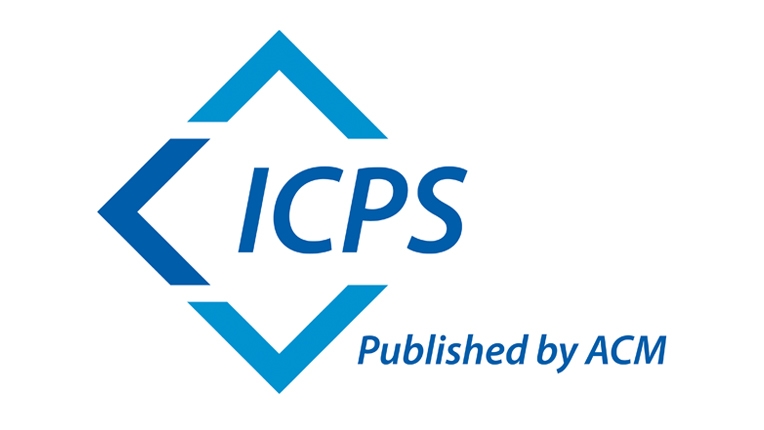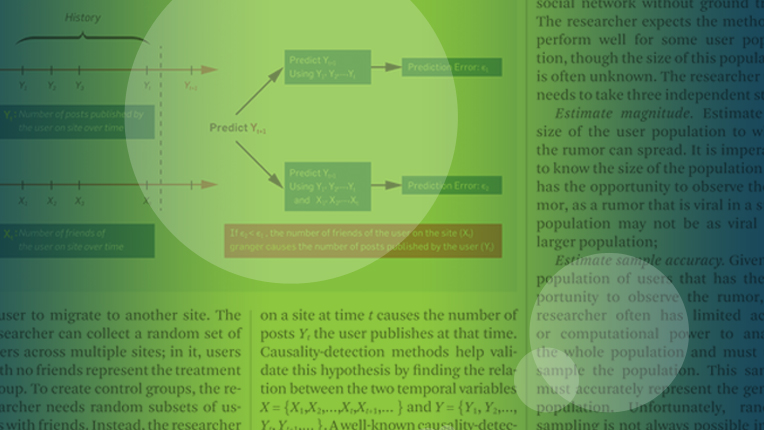Citation Style and Reference Formats
Page last updated July 11, 2023 by C. Rodkin
ACM IN-TEXT CITATION STYLE
The in-text citation style is as follows: For parenthetical citations we enclose the number of the reference, thus: [1]. Sequential parenthetical citations are enclosed in square brackets and separated by commas, thus [1, 2]. When a citation is part of a sentence, the name of the author is NOT enclosed in brackets, but the year is: "So we see that Burando et al. [1999]..."
SPECIAL NOTE ABOUT REFERENCE FORMATS
Reference linking and citation counts are facilitated by use of these standard reference formats. Please adhere to the reference formats that we use for ACM publications. If you do not, and your paper is accepted, it will be returned to you for proper formatting.
By using your BibTeX (.bib) file with the appropriate .bst file (ACM Reference Format) your references should require minimum editing.
ACM's preference is for full names and not initials or abbreviations.
Here are examples of the most common reference types formatted for ACM journals.
Note: For BibTeX examples see: http://www.acm.org/publications/authors/bibtex-formatting
For a paginated article in a journal:
[1] Patricia S. Abril and Robert Plant. 2007. The patent holder's dilemma: Buy, sell, or troll? Commun. ACM 50, 1 (Jan. 2007), 36-44. https://doi.org/10.1145/1188913.1188915
For an enumerated article in a journal:
[1] Sarah Cohen, Werner Nutt, and Yehoshua Sagic. 2007. Deciding equivalences among conjunctive aggregate queries. J. ACM 54, 2, Article 5 (April 2007), 50 pages. https://doi.org/10.1145/1219092.1219093
For a monograph (whole book):
[1] David Kosiur. 2001. Understanding Policy-Based Networking (2nd. ed.). Wiley, New York, NY.
For a divisible book (anthology or compilation):
[1] Ian Editor (Ed.). 2007. The title of book one (1st. ed.). The name of the series one, Vol. 9. University of Chicago Press, Chicago. https://doi.org/10.1007/3-540-09237-4
For a multi-volume work (as a book):
[1] Donald E. Knuth. 1997. The Art of Computer Programming, Vol. 1: Fundamental Algorithms (3rd. ed.). Addison Wesley Longman Publishing Co., Inc.
For a chapter in an edited book that is not part of a series:
[1] Beth Warren, Shirin Vossoughi, Ann S. Rosebery, Megan Bang, and Edd V. Taylor. 2020. Multiple ways of knowing*: Re-imagining disciplinary learning. In Handbook of the Cultural Foundations of Learning. Na’ilah Suad Nasir, Carol D. Lee, Roy Pea, and Maxine McKinney de Royston (Eds.), Routledge, 277–294.
For a (paginated proceedings) article in a conference proceedings (conference, symposium or workshop):
[1] Sten Andler. 1979. Predicate path expressions. In Proceedings of the 6th. ACM SIGACT-SIGPLAN Symposium on Principles of Programming Languages (POPL '79), January 29 - 31, 1979, San Antonio, Texas. ACM Inc., New York, NY, 226-236. https://doi.org/10.1145/567752.567774
For a Patent:
[1] Joseph Scientist. 2009. The fountain of youth. (Aug. 2009). Patent No. 12345, Filed July 1st., 2008, Issued Aug. 9th., 2009.
For an informally published work (such as some technical reports and dissertations):
-
Technical Report:
[1] David Harel. 1978. LOGICS of Programs: AXIOMATICS and DESCRIPTIVE POWER. MIT Research Lab Technical Report TR-200. Massachusetts Institute of Technology, Cambridge, MA.
-
Doctoral dissertation:
[1] Kenneth L. Clarkson. 1985. Algorithms for Closest-Point Problems (Computational Geometry). Ph.D. Dissertation. Stanford University, Palo Alto, CA. UMI Order Number: AAT 8506171.
-
Master's Thesis:
[1] David A. Anisi. 2003. Optimal Motion Control of a Ground Vehicle. Master's thesis. Royal Institute of Technology (KTH), Stockholm, Sweden.
For an online document/WWW resource: Website year can be found at the bottom of the website page or by viewing page properties/source to see when the page was last modified.
[1] Harry Thornburg. 2001. Introduction to Bayesian Statistics. (March 2001). Retrieved March 2, 2005 from http://ccrma.stanford.edu/~jos/bayes/bayes.html, archived at [https://web.archive.org/web/20240505055615/https://ccrma.stanford.edu/~jos/bayes/bayes.html]
[2] ACM. Association for Computing Machinery: Advancing Computing as a Science & Profession. Retrieved from http://www.acm.org/.
[3] Wikipedia. 2017. WikipediA: the Free Encyclopedia. Retrieved from https://www.wikipedia.org/.
For a Video (two examples):
[1] Dave Novak. 2003. Solder man. Video. In ACM SIGGRAPH 2003 Video Review on Animation theater Program: Part I - Vol. 145 (July 27-27, 2003). ACM Press, New York, NY, 4. https://doi.org/99.9999/woot07-S422
[2] Barack Obama. 2008. A more perfect union. Video. (5 March 2008). Retrieved March 21, 2008 from http://video.google.com/videoplay?docid=6528042696351994555, archived at [https://web.archive.org/web/20250310010326/https://www.youtube.com/watch?v=zrp-v2tHaDo]
For arXiv:
[1] Martha Constantinou. 2016. New physics searches from nucleon matrix elements in lattice QCD. arXiv:1701.00133. Retrieved from https://arxiv.org/abs/1701.00133
For a conference presentation:
[1] Brian J. Reiser. 2014. Designing coherent storylines aligned with NGSS for the K-12 classroom. Presentation at the National Science Education Leadership Association Meeting, Boston, MA, USA.
https://www.academia.edu/6884962/Designing_Coherent_Storylines_Aligned_with_NGSS_for_the_K_12_Classroom
[URL is optional.]
For an article that is under review:
The preferred way is for the authors to upload the paper to a preprint server such as arXiv and then cite the preprint version which has a permanent link.
If authors are unwilling to do so, the reference can be retained using the following style:
[1] R. Baggett, M. Simecek, C. Chambellan, K. Tsui, and M. Fraune (the year the manuscript was written). Fluidity in the Phased Framework of Technology Acceptance: Case Study to Gain a Holistic Understanding of (Older Adult) Participant Advancement Through Acceptance Phases with Mobile Telepresence Robots. Manuscript submitted for review.
New ACM Journals Accepting Submissions
Proceedings of the ACM on Software Engineering (PACMSE): Submission guidelines here
Proceedings of the ACM on Management of Data (PACMMOD): Submission guidelines here
ACM Transactions on Probabilistic Machine Learning (TOPML): Submit papers here
Proceedings of the ACM on Networking (PACMNET): Submission guidelines here
Games: Research and Practice (GAMES): Submit papers here
Collective Intelligence (COLA): Submit papers here
Journal of Computer and System Sciences (JCSS): Submit papers here
ACM Journal on Autonomous Transportation Systems (JATS): Submit papers here
ACM Journal on Responsible Computing (JRC): Submit papers here
ACM Transactions on Recommender Systems (TORS): Submit papers here
Distributed Ledger Technologies: Research and Practice (DLT): Submit papers here
ACM Transactions on Evolutionary Learning (TELO): Submit papers here
ACM Digital Government: Research and Practice (DGOV): Submit papers here
Publish in the ACM International Conference Proceedings Series
The ACM International Conference Proceeding Series (ICPS) provides a mechanism to publish the contents of conferences, technical symposia and workshops and thereby increase their visibility among the international computing community. The goal of this program is to enable conferences and workshops to cost effectively produce print proceedings for their attendees, while also providing maximum dissemination of the material through electronic channels, specifically, the ACM Digital Library.

Conference Proceedings—Rapid Dissemination of Research Findings
ACM conferences are a vital publication venue for computing research, and capture the cutting edge of innovation across the spectrum of computing by publishing refereed and invited papers.
Publish with ACM
ACM's prestigious conferences and journals seek top-quality papers in all areas of computing and IT. It is now easier than ever to find the most appropriate venue for your research and publish with ACM.
